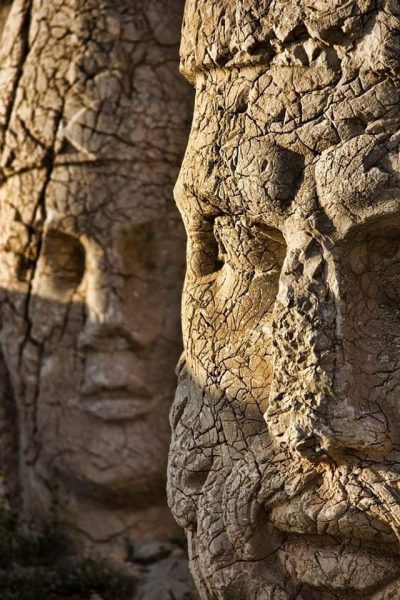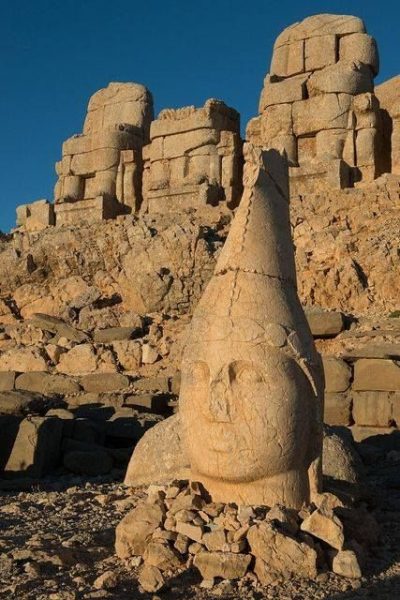
Nemrut Mountain, located in Adiyaman, Turkey, is shrouded in mystery and intrigue, boasting colossal statues of pagan gods that stand as silent sentinels of a bygone era. These awe-inspiring monuments were established by Antiochus I Theos, the ruler of the ancient Armenian kingdom of Commagene, during the 1st century BCE. As one of the most remarkable archaeological sites in Turkey, Nemrut Mountain continues to captivate visitors with its monumental statues and rich historical significance.
A Glimpse into Ancient Commagene
The giant statues of Nemrut Mountain are a testament to the grandeur and ambition of Antiochus I Theos, who sought to immortalize himself and his divine lineage through these magnificent sculptures. Located at an altitude of over 2000 meters, Nemrut Mountain served as the perfect backdrop for Antiochus’ ambitious project, overlooking the fertile plains below and commanding awe and reverence from all who beheld it.
The Colossal Statues

The statues at Nemrut Mountain depict a pantheon of pagan gods and deities, including Antiochus himself, Zeus, Apollo, Hercules, and Commagene’s patron goddess, Tyche. These monumental sculptures, some standing over 8 meters tall, were intricately carved from limestone and adorned with elaborate inscriptions and reliefs, symbolizing the divine authority and power of Antiochus and his kingdom.
A Symbol of Divine Kingship
Antiochus I Theos conceived Nemrut Mountain as a sacred sanctuary where he could commune with the gods and assert his divine right to rule. The statues, arranged in a grand ceremonial complex, served as a testament to his divine kingship and the close relationship between the ruler and the divine realm. Visitors to Nemrut Mountain are transported back in time to an era of religious syncretism and divine patronage, where gods and mortals mingled in a celestial dance of power and authority.
Preserving Ancient Heritage

Despite the passage of millennia, the giant statues of Nemrut Mountain have stood the test of time, enduring as symbols of ancient Commagene’s cultural and religious heritage. Today, this UNESCO World Heritage Site attracts visitors from around the globe, offering a glimpse into the religious beliefs and artistic achievements of the ancient world. Efforts to preserve and protect Nemrut Mountain ensure that future generations can continue to marvel at its monumental statues and unravel the mysteries of its storied past.
Conclusion
The giant statues of Nemrut Mountain stand as enduring symbols of ancient Commagene’s grandeur and ambition, immortalizing the divine kingship of Antiochus I Theos and the pantheon of pagan gods worshipped by his people. As visitors gaze upon these colossal sculptures, they are transported back in time to an era of myth and legend, where gods walked among mortals and kings sought to ascend to divine status. Nemrut Mountain remains a testament to the enduring legacy of ancient civilizations and the timeless allure of archaeological wonders.





